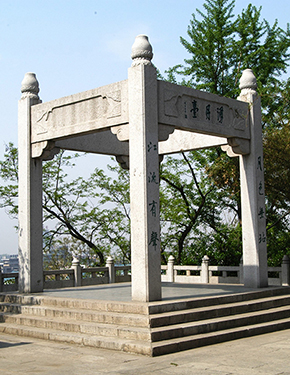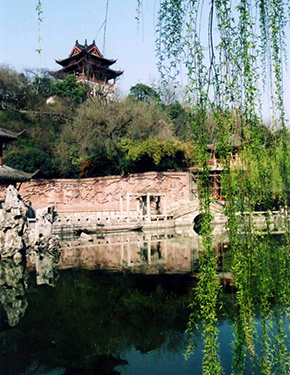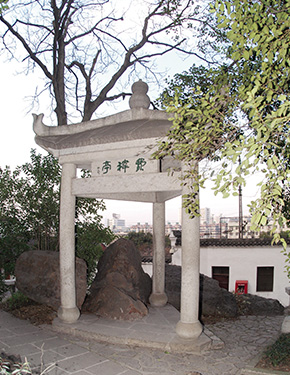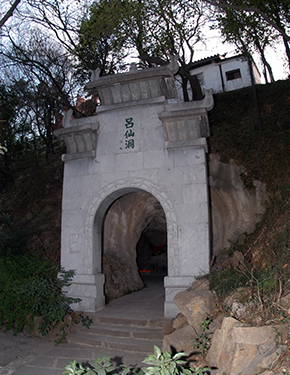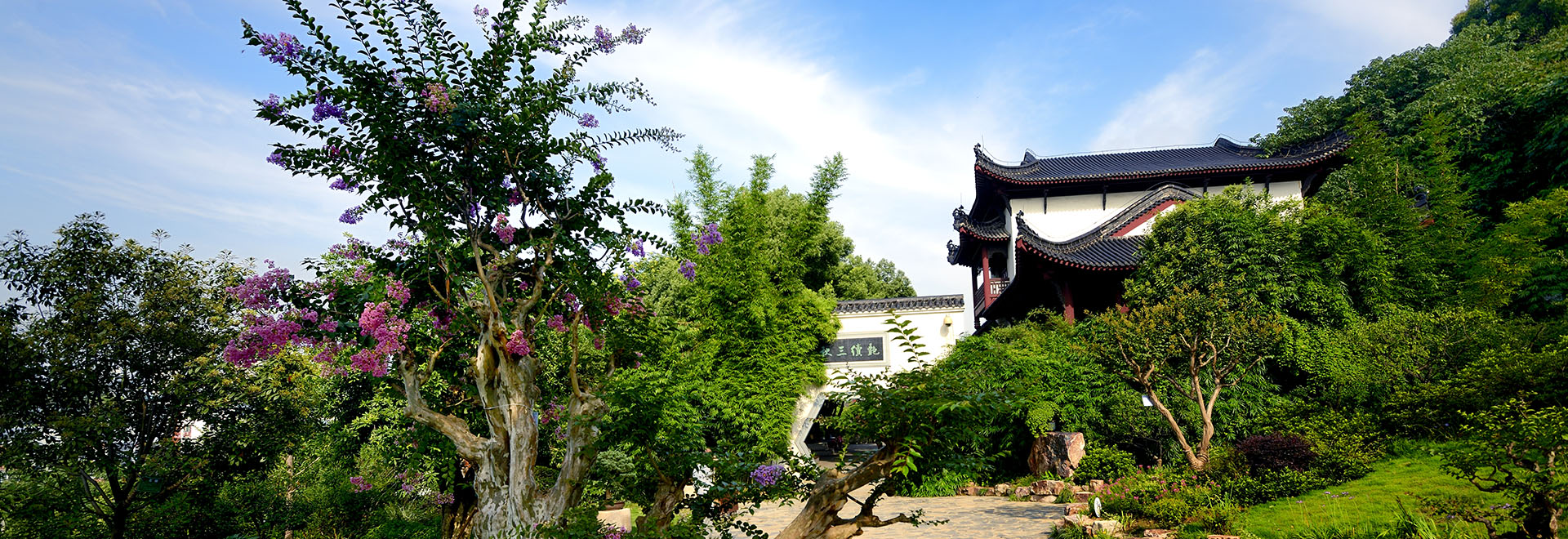
South Tower
- Nomal
- Enlarge
- Reduce

For this edifice, there are other sobriquets like White Cloud Tower, Tower of Pacifying Distant Regions, Tower of Gorgeous Moon and Tower of Chu’s View. South Tower, Yellow Crane Tower, Monk Temple and North Pavilion are known as “Four Wonders” of ancient Snake Mountain. In 1985, it was rebuilt 185 m southeast of Yellow Crane Tower and 100 m southwest of White Cloud Pavilion.
This tower owes its cultural origin to Eastern Jin Epoch. In the 9th Year (334) of Emperor Chengdi’s Xianhe Period, Inspector-General of Jingzhou Prefecture Tao Kan died of illness. So, Yu took his place at Wuchang—General of Western Conquest. According to “Demeanor,” A New Account of Tales of the World, Yu Liang ascended the tower of Wuchang in a night and chatted wildly with his aides. This tale has become a legend in the eyes of later generations as well as a source of tower-specific culture. Nonetheless, the tower he mounted back then is not located on Snake Mountain, Wuchang, but on the Gulou Street in the downtown Ezhou, Hubei.
It’s not yet clear when the original tower was erected. Despite that, we can learn about its history and in particular name-changing from local gazetteers and ancient poems and essays. Its birth, however, would not have been later than Tang Dynasty. As documented in Record of the Reconstruction of South Tower by Song Minwang in the 2nd Year (1342) of Emperor Huizong’s Zhizheng Period, “Though the tower itself was erected after Wuchang Prefecture’s initiation in the AD 279, its name South Tower had been determined earlier.” Li Bai first mentioned it in the lines of a poem, “South Tower boasts a clear night-view. It is a romantic venue in Wuchang.” Du Mu wrote Night at South Tower, “Jade pipes and gold wine-cups fill the deep night; I feel sad about fleeting days and years. The song soars up into the clear sky and the moon shines bright on the verdant tower.” Clearly, the tower could only be an entertainment venue back at that time.
Qianlong Period’s Gazetteer of Jiangxia County says, “South Tower lies on the top of Yellow Crane Mountain. During Yuanyou Period (1086-1094), Sub-Prefectural Magistrate Fang Ze built it again and wrote down a record. Later it got renovated around 1101 in the early Jianzhongjingguo Reign of Emperor Huizong. Then this tower was reconstructed in 1165—the early year of Qiandao Period and repaired during the Jiading Period (1208-1224).” Yet Jiang Kui’s “Preface to Chanting at a Verdant Pavilion” writes, “In the winter of 1186 (Bingwu Year) of Chunxi Period, the tower was once renamed ‘Tower of Pacifying Distant Regions’ upon reconstruction.”
In the 2nd Year (1103) of Huizong’s Chongning Period, littérateur Huang Tingjian was banished to Yishan, Guangxi for his outrageous poem. He stayed more than one year at Ezhou midway and visited this tower many times. His lines make alive different facets of the tower. “On all sides, mountain hue blends with water hue. Singharanut and lotus fragrance wafts for miles onto the balustrade where I stand.” This quote gives a fine view of the tower. “South Tower pierces the sky for three hundred chi, to which cloud dwellings pale in comparison.” The pompous tower holds all tourists in awe. “Of all nature’s masterworks in Jiangdong and Hubei, no one can match the South Tower of Ezhou.” This is Huang’s great praise.
In early Southern Song Epoch, South Tower became a hot destination of Ezhou (Wuchang). Numerous scholars came here and competed for excellence with others, leaving the locality with many famous poems.
Southern Song scholar Lu You’s My Journey to Shu described the tower shape in detail, South Tower “stands on the rocky city wall south of Yi Gate. It is also called Yellow Crane Mountain. This stately-looking edifice is an ideal place to enjoy great views. Ezhou has many pavilions and towers, but this one holds the essence of the gorgeous land… Standing here allows you to overlook South Lake dotted with myriad lotus leaves. In the center of the lake, there is a bridge called Guangping, on which hilarious stores stand in rows. What’s more, you can find over-water pavilions beside the bridge.” In the 4th Year (1177) of Emperor Xiaozong’s Chunxi Period, Fan Chengda returned to Lin’an (Hangzhou) upon his retirement from Commissioner of Sichuan in accordance with the imperial edict. He passed by Ezhou midway and recorded in Diary of a Boat Trip to Wu, “(South) Tower leans on Yellow Crane Mountain before the prefecture seat. This tower pokes into the heaven and naturally gives climber a cold feel. It is no doubt the best of all such buildings outside the lake. Stand here and you can overlook South Market (around White Sand Island, Wuchang) abuzz with exotic dwellings.” He wrote a poem South Tower of Ezhou, “From which house is heard a jade flute on Mid-Autumn Day? Yellow Crane, if returning here, would know its old chum. Han trees grow over North Marsh in an adorable way. Shu River holds lofty South Tower with open arms.” Reading those lines remind any reader of the tower’s bright moon at that fiesta and the prosperity of Ezhou’s South Market. Clearly, the poet was meant to stay here and enjoy those scenic gems.
Moreover, poets like Zhang Xiaoxiang, Xin Qiji, Liu Guo, Jiang Kui, Dai Fugu, Wen Tianxiang wrote relevant lyrics, making the tower more cultural and prestigious. Among all such famous pieces, “A hero should ride a dragon or horse. Such feat can be staged via local opera on South Tower” unleash author Li Tingzhong’s heroism; masterwork To a Sugary Chant: Revisiting Wuchang conveys lyricist Liu Guo’s deep sorrow for the country at Mid-Autumn Day; lines “Tread on black dragon’s back” and “Overlook all realms in sight” showcase the nostalgic heroism of Dai Fugu who enjoyed 50-year-long prestige in the poetic world; last but not least, “When the moon is down, the Milky Way fades out amid the morning glow; Now jade piper plays Mume-Falling Melody so early”, lines in Wen Tianxiang’s Collective Joy: Congratulations on Li Loufeng ‘s Promotion from Transport Commissioner of Hubei to Magistrate of Ezhou Prefecture depict both the beautiful scenery and the poet’s elated passion.
From Yuan onwards, the tower lost its former glory. It was rebuilt in Yuan’s Zhongtong Period and Yuanzheng Period (1260-1296). In the 9th Year (1636) of Ming’s Chongzhen Period, Inspector-General Song Xian erected White Cloud Pavilion on the site. Then another Inspector-General Song Yihe removed and renovated the pavilion as the parade tower before it was destroyed once more. When it was burnt down in the 7th Month of the 43rd Year (1704) of Qing’s Kangxi Period, Governor Yu Chenlong and Inspector-General Liu Dianheng rebuilt the tower again and renamed it “White Cloud Tower.” When it came to Qianlong Period (1736-1795), Doulao Pavilion was built on the old site of the South Tower. Later in the 13th Year (1874) of Tongzhi Period, Shrine of Guan Wen and Hu Linyi began to stand itself on the base of that pavilion.
As South Tower got dilapidated, Tower of Chu’s View emerged. In the 57th Year (1792) of Qing’s Qianlong Period, the Tower of Chu’s View, in fact a drum tower left of the ancient South Tower, perished in a fire. The latter found its home at present-day Flying Bridge, Simenkou, Sheshan (Snake Mountain). In Tang Era, it was a watchtower on the city wall. Later it was transformed into Qizhang Hall to commemorate Niu Sengru. Song Era witnessed the Hall of Filial Duty (name Xi Cai refers to wearing children's colourful clothes to amuse one’s Parents) on the same site. And it soon got renamed Qizhang Pavilion. In Ming’s Hongzhi Period, Administration Commissioner Han Hao presided over the reconstruction and recovered its function of time telling. And he gave it the original name “Chu’s View.” Qing scholar Chen Shi’s Records of Hubei’s Old Anecdotes writes, after that ruining, Governor of Huguang (Hunan and Hubei) Bi Yuan took charge of the reconstruction and restored its original name “South Tower” considering Huang Tingjian’s line “There is no match for the South Tower of Ezhou;” yet the tower imitated the design of South Tower in Jiangning (now Nanjing)—erecting columns within the walls and inlaid a wall with a stone inscription “Nan Lou Yi Sheng (Vestige of South Tower).” The folks, however, still called it “Drum Tower.”
In late Qing, the local government made a passageway through Snake Mountain on which the tower (dubbed drum tower) stood to connect Simenkou and Long Street south of the mountain. The tunnel was thus named “Drum Tower Tunnel.” In the early Republic Period, Commander of Hubei Li Yuanhong sponsored Yangzheng Primary School, using South Tower as dormitory. The tower was demolished when the Wuhan Nationalist Government demolished the city wall of Wuchang in 1927. Then in 1936, the short tunnel was levelled to broaden the Long Street.
In 1985, the tower reopened upon completion to provide guests with a space for resting and gathering. This new South Tower of two storeys is backed against the mountain to face the south. It consists of 5 east-west rooms and 3 south-north roomsf. This edifice of 16.6 m length, 7.5 m width and 9.5 m height covers more than 120 m2. Obviously, it is a quasi-brick and wood structure—in fact reinforced concrete structure featuring hip-gable roof, double eaves, flying corners, black tiles and vermillion pillars. The structure has a commodious space as supported by 6 columns. Beams, purlins, columns and foundation are all fitted in a tight way. What’s more, lattice windows and panel doors are so simple yet elegant, infusing the vestige with a new feel. The tower itself is flanked by stele and corridor. In this way, this new edifice looks much grander than the original one. Below the front eave is hung Wang Juchang’ inscription—gold characters “Jin Gu Yi Nan Lou (Just One South Tower of the Past and the Present)” on a black tablet. This well-structured tower strikes a vigorous yet exquisite note. The front door boasts a pair of Qing scholar Yuan Taihua’s couplets handwritten by Li Duo Vice President of China Calligraphers Association:
Over the surging river, listen to a celestial flute’s melody.
On this soaring tower, look up to see fleecy white clouds.
A more-than-100-year-old tree grows there, steeping the tower in a much antique charm.
Its first floor operates round wood carvings, calligraphies, paintings, books and magazines; the second floor features four treasures of study and red wood furniture. Indeed, the second floor is a perfect venue for tourists to show off their talent in calligraphy or painting.
Tourist Service
- consulting hotline
Service hotline: 027-88875096
Supervision hotline: 027-88848188
027-12301
(Wuhan Tourism Bureau.)
027-87124701
(Hubei Tourism Administration)
- Official qr code.
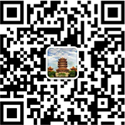
Scan focuses on the yellow crane tower.
- Online consultant
- Complaint and advice

